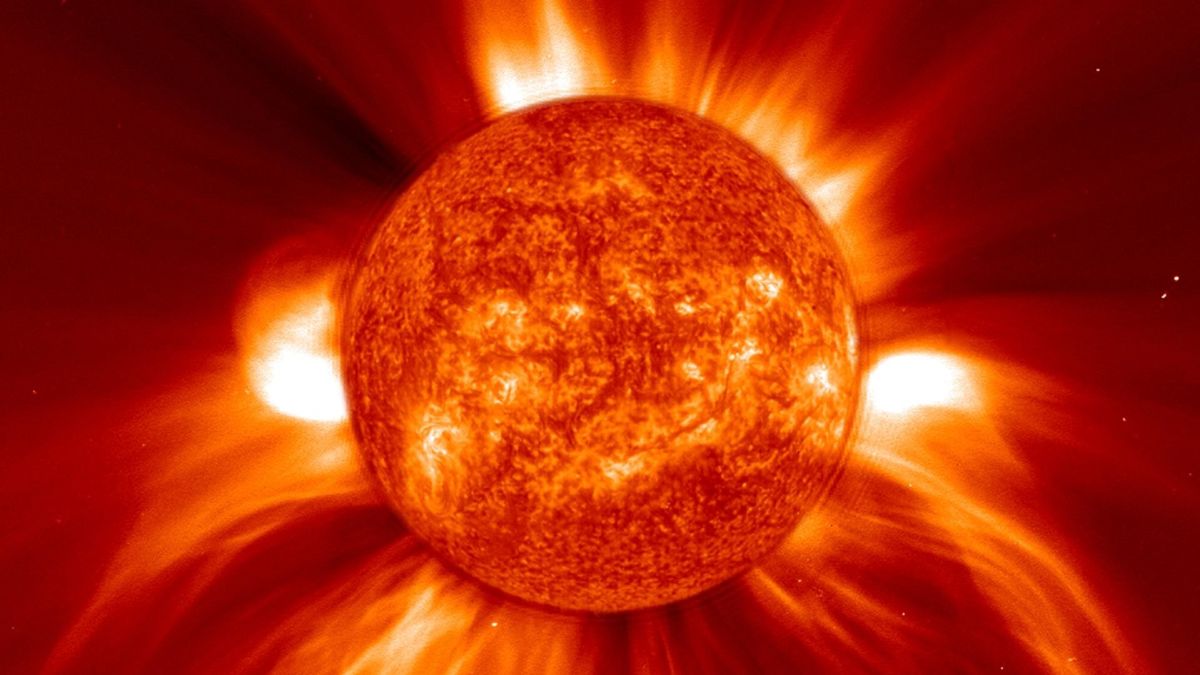This post may refer to COVID-19
To access official information about the coronavirus, access CDC - Centers for Disease Control and Prevention.

www.space.com
Extreme solar storms can strike out of the blue. Are we really prepared?
In 2003, a powerful solar storm hit Earth with little warning, causing disruption to power grids, aviation and satellites. Twenty years later, we are only slightly better prepared for such incidents.
Science & Tech
A surprise solar storm in 2003 disrupted hundreds of flights all over the world, caused spacecraft controllers to lose track of low Earth orbit satellites for days and cut power to tens of thousands of people in Sweden. Now, nearly 20 years later, one of the world's leading space weather forecasters admits that our life-giving star can still catch us unprepared.
October 2003 was a quiet month at the Space Weather Prediction Center (SWPC) of the U.S. National Atmospheric and Oceanic Administration (NOAA). The sleepy sun was heading toward a minimum in its 11-year cycle of activity, churning out a mediocre 100 sunspots a month. In a week, everything changed. The sun broke out with the largest cluster of sunspots in more than 10 years and pummeled Earth with a barrage of flares and plasma eruptions that unleashed the most vicious space weather event in recent history.
"I remember that October week quite distinctly," Bill Murtagh, NOAA's SWPC program coordinator who at that time was a space weather forecaster on duty, told Space.com. "Partly because it was my birthday, but mostly because the sun was really unremarkable. We had no idea what was going to happen just one week later."
The event, which since entered history books as the Halloween solar storms, wasn't even the worst the sun is capable of. In fact, the 2003 storms unleashed only about a tenth of the energy of the two most powerful solar storms in recorded history — the so-called Carrington Event of 1859 and the 1921 New York Railroad Storm, both of which at that time disrupted telegraph services all over the world.
Things have changed since those storms. Telegraph is a thing of the past now, but many new technologies, which we increasingly rely on, are equally vulnerable to space weather outbursts. The problem is, Murtagh says, that space weather forecasters are only marginally better at predicting those storms than they were in 2003.
"We actually identified space weather in some of our homeland security documents as one of only a couple of threats that could have a nationwide or even a global impact," Murtagh said. "It's kind of like the pandemic. And we've seen what happened with the pandemic."
Not seeing it coming
What happened with the sun during that fateful week in 2003 when it went from quiet to mad with so little warning? It spun on its axis, the way it has done for eons, revealing a sunspot cluster 13 times the size of Earth that must have been simmering out of observers' view for quite some time.
Sunspots are cooler regions on the sun's surface where the star's magnetic field is distorted so much that the magnetic lines eventually burst, releasing radiation in the form of solar flares, and plasma in the form of coronal mass ejections (CMEs).
Once that sunspot in October 2003 was aimed at Earth, a barrage of 17 solar flares and CMEs ensued, triggering widespread radio blackouts and geomagnetic storms in Earth's atmosphere.
























































